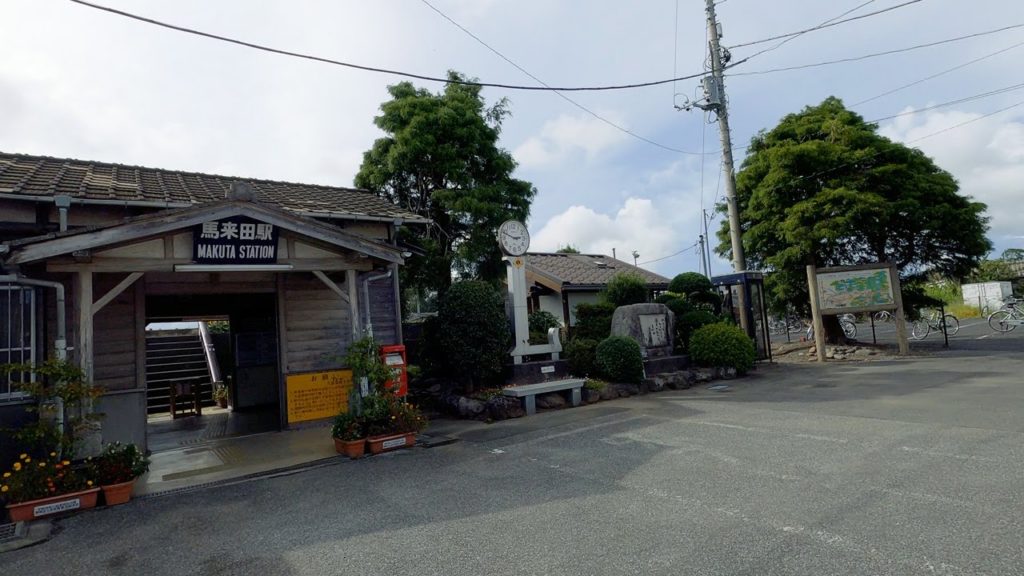Map:
Here is the time-lapse I made after getting off the car:
00:00 Ushiku, Ichihara City, Chiba
03:57 Kazusa-Ushiku Station
20:53 Makuta Station
51:46 Mt. Kano, Kimitsu City
Ichihara (市原市, Ichihara-shi) is a city located in Chiba Prefecture, Japan.
As of December 2015, the city has an estimated population of 275,776, and a population density of 749 persons per km2. The total area is 368.20 square kilometres (142.16 sq mi). The city is home, together with the city of Chiba, to the JEF United football club.
Ichihara is located in the western part of the Bōsō Peninsula, and geographically is the largest of Chiba Prefecture’s cities and towns. The highly industrialized northern part of the city sits on Tokyo Bay, while the southern part of the city is primarily mountainous. Ichihara, dense in housing developments, serves as a satellite town of Tokyo and Chiba City.
The area of modern Ichihara is the center of ancient Kazusa province. The ruins of the Nara period Kazusa kokubun-ji have been found within the borders of Ichihara, although the exact location of the Nara-period provincial capital remains uncertain. During the Sengoku period, the area was contested between the Chiba clan to the north, and the Satomi clan to the south. During the Edo period, the area was divided between Goi Domain, Tsurumaki Domain and large areas of tenryō territory controlled directly by the Tokugawa shogunate and administered by various hatamoto.
(Wikipedia)
Kazusa-Ushiku Station (上総牛久駅, Kazusa-Ushiku-eki) is a railway station operated by the Kominato Railway Company’s Kominato Line, located in Ichihara, Chiba Prefecture, Japan. It is 16.4 kilometers from the western terminus of the Kominato Line at Goi Station.
(Wikipedia)
Makuta Station (馬来田駅, Makuta-eki) is a railway station operated by JR East’s Kururi Line located in Kisarazu, Chiba Prefecture Japan. It is 13.9 kilometers from the western terminus of the Kururi Line at Kisarazu Station.
Makuta Station was opened on December 28, 1912 as a station on the Chiba Prefectural Railways Kururi Line. The line was nationalized into the Japanese Government Railways (JGR) on September 1, 1923. The JGR became the Japan National Railways (JNR) after World War II. The station was absorbed into the JR East network upon the privatization of the JNR on April 1, 1987. The station has been unattended since June 1, 1995.
(Wikipedia)
Mt. Kano
Along with Mt. Nokogiri and Mt. Kiyosumi, Mt. Kano is one of Chiba’s Three Mountains of Boso .
The westernmost of the three, it’s Chiba’s second-highest mountain at 380 meters high and offers breathtaking panoramic views of Tokyo Bay. It’s less than an hour and a half by train from Tokyo and is part of the Minami-Boso Quasi-National Park.
From Tokyo, it takes less than two hours by train.
Take the JR Keiyo-Uchibo Line limited express from Tokyo to Sanuki-machi Station, then take the bus from Sanuki-machi Station to Kano-zan.
Views from the top look down over the thick pine forested Kujukutani Valley to the misty blue hills beyond. The name Kujukutani means 99 valleys and the hazy scenery was the object of Japanese artist Kaii Higashiyama’s famous piece “Afterglow.”
The valley’s colors change throughout the year, offering colorful blooming flowers during the spring and gold and orange hues during the fall.
Chiba Prefecture:
Among all the prefectures, only Hokkaidō produces more agricultural products, and Chiba leads Hokkaidō in vegetable production. Peanuts are considered a specialty product of Chiba: 78 percent of the country’s peanuts are produced in the prefecture.
Chiba Prefecture leads the nation in the production of several vegetables, including carrots; cabbage; daikon radish; negi, the ubiquitous Japanese cultivar of the Welsh onion; loquat; nashi, the Japanese cultivar of the pear, which has a two-hundred-year history of cultivation in the prefecture; tomatoes; and spinach. It is the nation’s second largest producer of corn. Rice is also grown, and seaweed, specifically nori, is harvested in large quantities from Tokyo Bay.
(Wikipedia)
Filming Date: September 2nd, 2020
Thank you very much for watching.
If you like our videos, please consider subscribing to our channel.
Youtube:
We are also on Twitter and Instagram:
Twitter:
Instagram:
#TokyoSmith #japantravel #japan


AloJapan.com